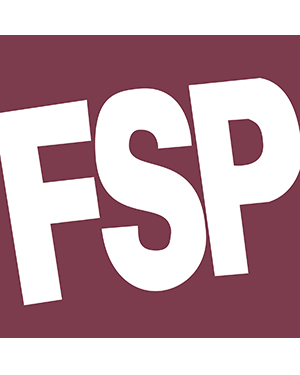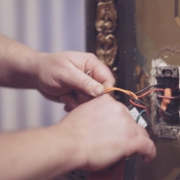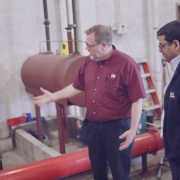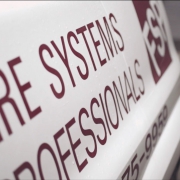Fire Safety 101 for the Safety Professional
Source: ehstoday.com
In this age of multitasking, consolidation of responsibilities and shifting job duties, safety professionals often find themselves saddled with responsibilities in the fire safety realm.
In theory, fire responsibilities appear to correlate with the safety professional’s basic safety-related duties. However, the knowledge base required in the specific areas of fire protection and fire suppression often mandate a substantial learning curve.
Safety professionals with fire-related responsibilities should acquire, at a minimum, a working knowledge of their facility’s fire systems as well as the various fire-related programs in order to be able to appropriately manage, develop and maintain fire protection and suppression programs.
Safety professionals often lump all fire-related activities into one area, namely, the “fire program.” In fact, there is a distinct difference in the activities involved in fire protection verses fire suppression.
In general, fire protection includes such equipment and activities as fire prevention training, sprinkler system inspection, hot-work permit programs and fire extinguisher training. Fire supression, on the other hand, includes activities and equipment that would be incorporated into fighting a fire after an ignition. Although these lines often can blur in the day-to-day management of the fire function, it is important to identify and effectively manage each function individually as well as in conjunction with each other.
Prevention of the potential fire is paramount in every operation. In a safety professional’s busy work schedule, appropriate time and efforts should be provided for the development, training and enforcement of the fire prevention activities. Fire suppression, on the other hand, usually involves a reactionary activity and requires more equipment-specific efforts, such as maintenance and inspection of the existing fire suppression equipment, and specific suppression activity training.
In the busy day of a safety professional, it is far too easy to let fire protection and fire suppression activities be placed on the back burner due to other pressing demands. However, safety professionals should be aware that the time and efforts spent in fire-related activities most definitely pay dividends in preventing fires or reducing the potentially devastating effects that fire can have on most operations.
Know the Equipment
It is essential that safety professionals become familiar with all facets of their facility’s fire protection equipment and systems in order to be able to properly inspect and ensure preventative maintenance (PM) programs are adequate and operational.
Additionally, it is vital that the safety professional become knowledgeable in the overall operations of the entire fire protection system and the impact the fire protection system may have on other operational systems. For example, is the house water drawn from the same tank as the fire water? If the safety professional tests the backup fire pumps, will this disturb the sediment in the tank and impact the house water and thus the overall operations of the facility?
Safety professionals should be aware that a facility may have different types of fire protection equipment that, if used incorrectly, could result in injuries or increased property damage. It also should be noted that a simple pre-analysis of fire protection equipment will allow the safety professional to develop an in-depth and adequate fire protection and suppression plan. Initially, identifying the hazards should occur in order to access the correct types of fire equipment that should be present within the facility. An example of this basic analysis is fire extinguishers. Fire extinguishers are designed to be used for many different types of fire. Each facility possesses different potential hazards that must be assessed in order to determine the correct fire extinguisher to be used for the specific potential hazard.
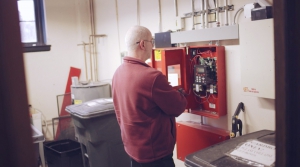
Know the Type of Fire
One hazard that most facilities have present is the hazard of fire. The use of fire extinguishers as a means of fire suppression is common and often “assumed” practice. As simple as it may seem, training, along with basic knowledge of different types of fires (chemical, electrical, etc.) and a skill base in firefighting, is a necessity for a safe response to the incident.
After the hazard has been identified, determine the types of fire extinguishers that are required in order to handle the threat of fire. Common fire extinguishers are designed to extinguish either Class A, B, C, D or K types of fires, and some are able to extinguish multiple classes of fires (ex: Class ABC extinguishers). It is important that employees can identify the various types of fires and be able to select and operate the correct fire extinguisher.
To ensure that all fire protection equipment works when needed, a systematic method for inspecting and maintaining all fire protection equipment must be developed and implemented. The safety professional’s “fire program” must include this inspection and maintenance process to ensure that the fire extinguisher is in excellent working condition. According to OSHA 29 CFR 1910.157, where fire extinguishers have been placed for use in the workplace, OSHA states that employers shall provide a monthly and annual inspection to ensure fire extinguishers are in good working condition.
Fight vs. Flight
The safest response to a fire might be ordering an evacuation of the facility in the event of an emergency where fire is present. This brings forward the question of fight vs. flight. Do I want my employees to try to suppress the fire or simply evacuate?
This should be determined early in the facility assessment for hazards. Training the employees to handle a fire-related incident brings in many unknowns when dealing with the final outcome of the incident.
For example, will employees remember their training when facing the pressure of a stressful event? Human behavior is unpredictable when put under extreme stress such as a life-threatening event. A way to manage the response of the employees is to train, train and train. Training will assist the employee in overcoming the stress present during the emergency.
This applies to all areas of safety. Should you desire the employee to fight, make sure that they receive proper training in the areas of hazard recognition, PPE, proper equipment selection, incident notification and evacuation.
Should you consider flight? Many facilities that do not have major hazards have chosen to assume the flight method in dealing with fire incidents. This arguably limits the potential liability for the employer through the reduction of the risk that may be present while attempting to suppress the fire.
In many situations, the flight method will allow for the fire to grow to a larger size. However, the likelihood and risk of potential employee injuries will be dramatically reduced when using this method.
Conversely, if the safety professional decides that it is more beneficial for employees to attempt to suppress small fires, it is imperative that appropriate personnel receive training on fire extinguishers.
It should be noted that fire extinguishers are designed to control small fires only. Fire extinguishers also can offer endangered employees a method for escape should they become trapped by a fire. A simple 30-minute to 1-hour training program on proper fire extinguisher operation could be a lifesaving tool for the employees at your facility. Many local fire departments will provide training on fire extinguisher use for facilities within their jurisdiction.
Lastly, certain circumstances, such as the hazard risks in the facility and response time of the local fire department, may require the establishment of an on-site fire brigade. Most organizations that have considered this option have elected not to pursue it if other options are available, due to the potential risk to participating personnel, the overall costs of equipping and maintaining the fire brigade, substantial equipment demands and mandatory training requirements. Safety professionals considering this option should closely evaluate the requirements under 29 CFR 1910.156.
Fire protection and suppression risks, although often low on the safety professional’s daily activity list, are very real risks which must be carefully evaluated and addressed appropriately within the overall safety and health plan. As we all have seen over the years, a fire within an operation can be devastating in terms of human life, impact on the operations and even the overall survival of the company. The time spent in carefully evaluating your fire protection program as well as your fire suppression efforts can pay substantial dividends in the event of a fire.
